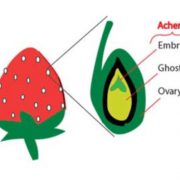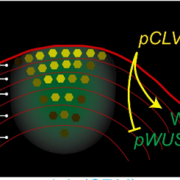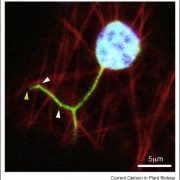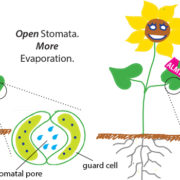POLAR-guided signalling complex assembly and localization drive asymmetric cell division (Nature)
 In Arabidopsis, stomatal guard cells are specified following a set of conserved asymmetric cell divisions (ACDs), starting with a meristemoid mother cell. How do cells establish asymmetric divisions? Several proteins have been identified that are required for this, including BASL and POLAR, transcription factors including SPCH, as well as BIN2 and MAP kinases. BIN2 has been previously shown to phosphorylate both MAP kinases and SPCH. Houbaert et al. show that in the meristemoid mother cell, POLAR acts as a scaffold that is needed to polarize BIN2, which is necessary for assymetric divisions. When POLAR levels are low, as in the stomtatal lineage ground cell, BIN2 localizes to the nucleus where it phosphorylates SPCH and restricts ACDs. (Summary by Mary Williams) Nature 10.1038/s41586-018-0714-x
In Arabidopsis, stomatal guard cells are specified following a set of conserved asymmetric cell divisions (ACDs), starting with a meristemoid mother cell. How do cells establish asymmetric divisions? Several proteins have been identified that are required for this, including BASL and POLAR, transcription factors including SPCH, as well as BIN2 and MAP kinases. BIN2 has been previously shown to phosphorylate both MAP kinases and SPCH. Houbaert et al. show that in the meristemoid mother cell, POLAR acts as a scaffold that is needed to polarize BIN2, which is necessary for assymetric divisions. When POLAR levels are low, as in the stomtatal lineage ground cell, BIN2 localizes to the nucleus where it phosphorylates SPCH and restricts ACDs. (Summary by Mary Williams) Nature 10.1038/s41586-018-0714-x









